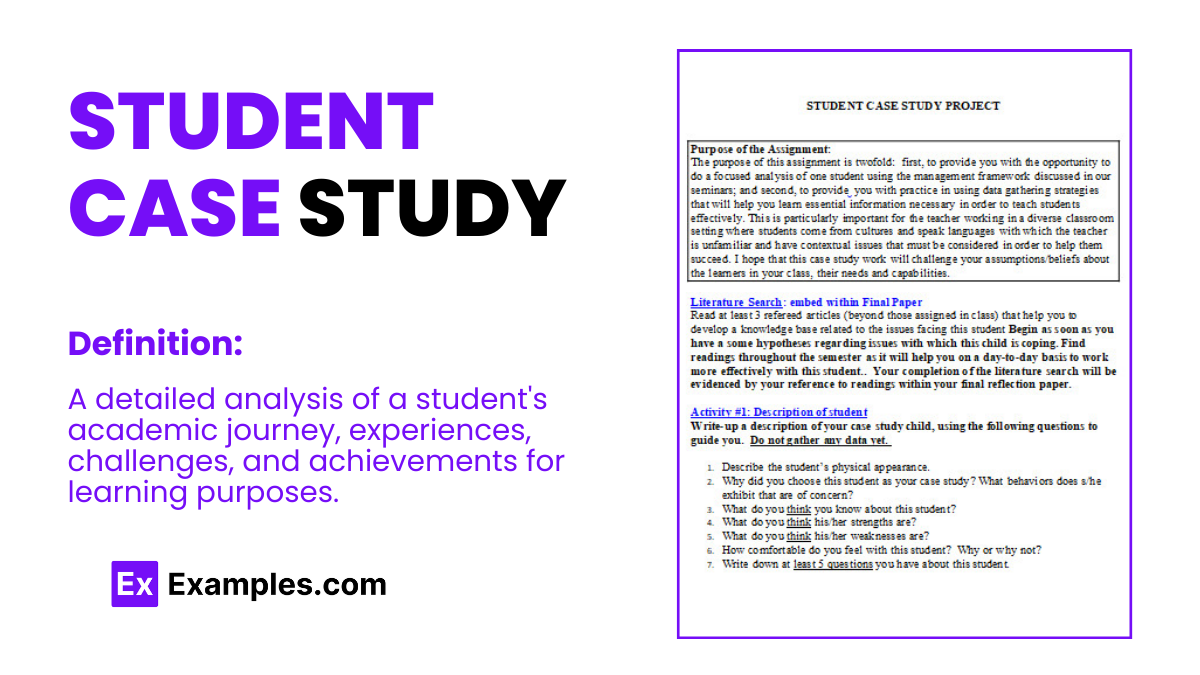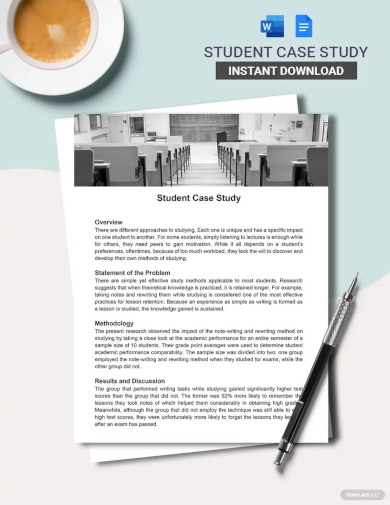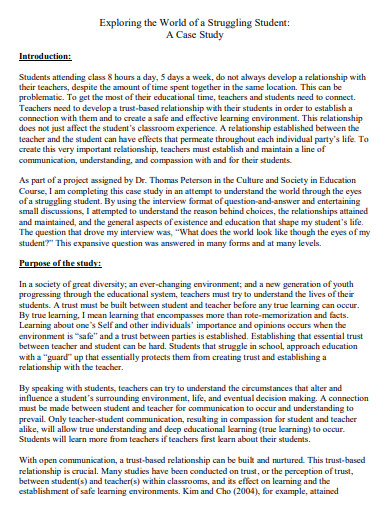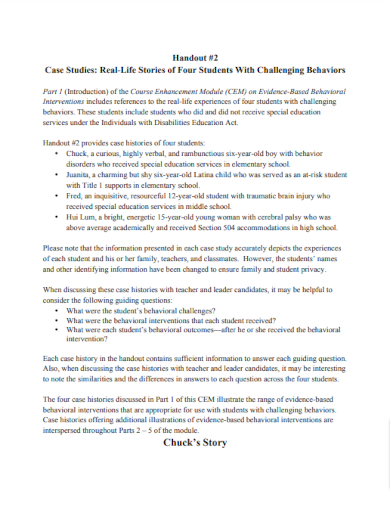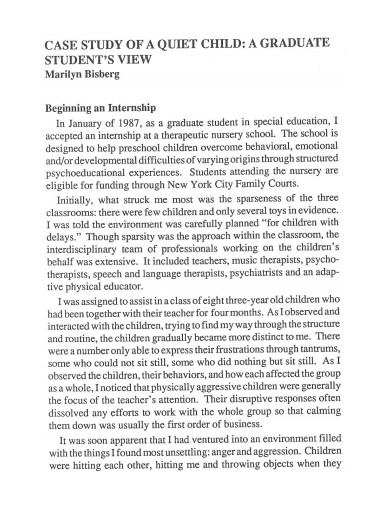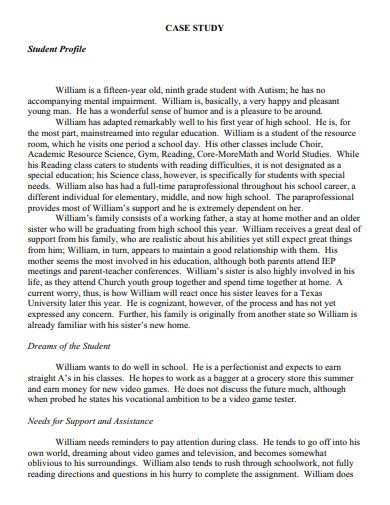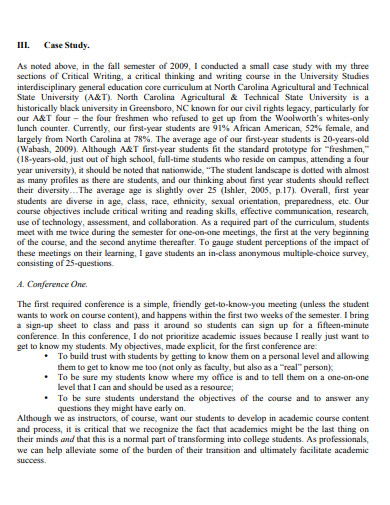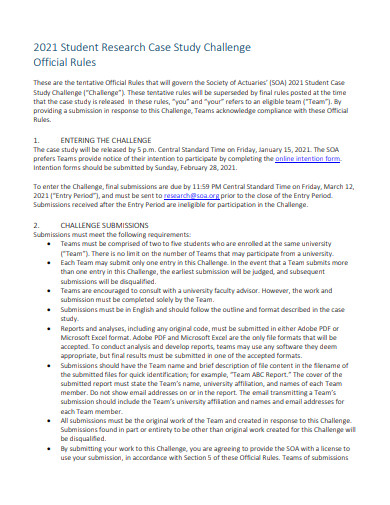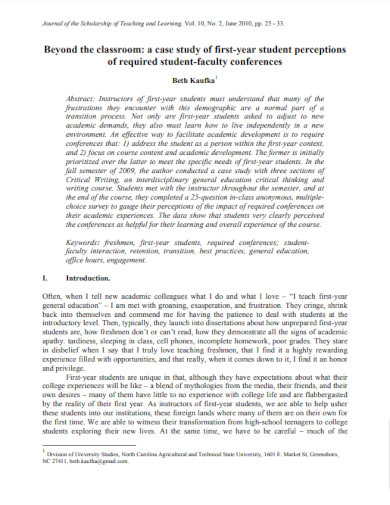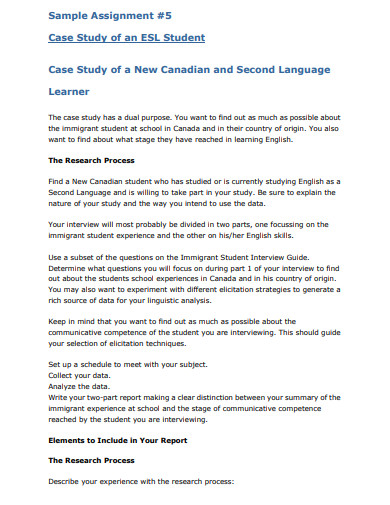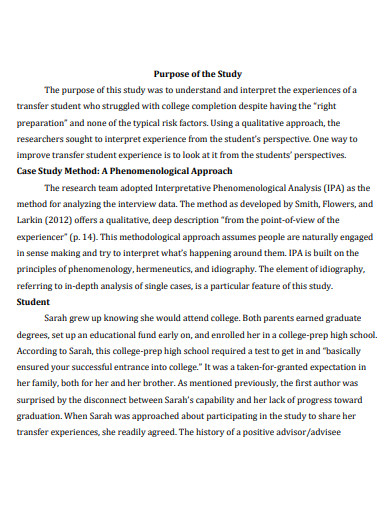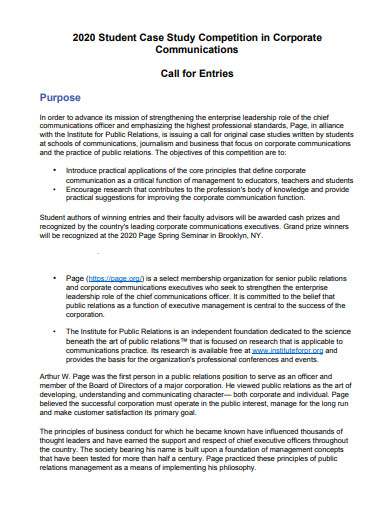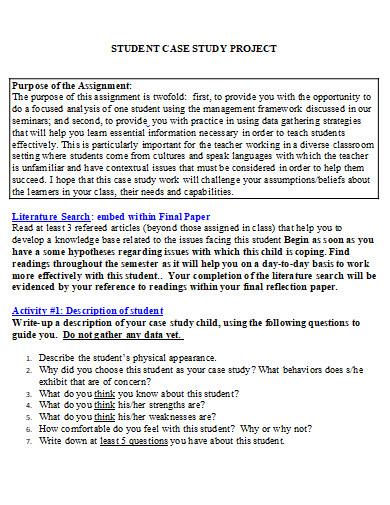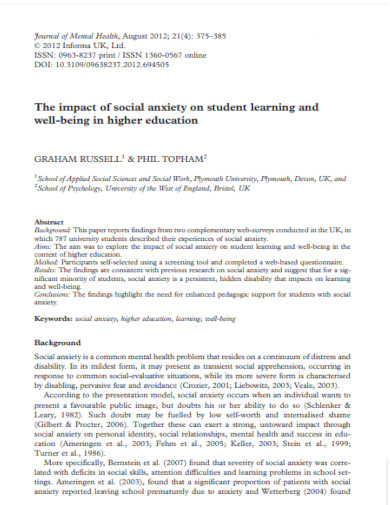18+ Student Case Study Examples
Delving into student case study offers invaluable insights into educational methodologies and student behaviors. This guide, complete with detailed case study templates, is designed to help educators, researchers, and students understand the nuances of creating and analyzing case studies in an educational context. By exploring various case study examples, you will gain the tools and knowledge necessary to effectively interpret and apply these studies, enhancing both teaching and learning experiences in diverse academic settings.
What is a Student Case Study? – Meaning
A student case study is an in-depth analysis of a student or a group of students to understand various educational, psychological, or social aspects. It involves collecting detailed information through observations, interviews, and reviewing records, to form a comprehensive picture. The goal of a case study analysis is to unravel the complexities of real-life situations that students encounter, making it a valuable tool in educational research. In a case study summary, key findings are presented, often leading to actionable insights. Educators and researchers use these studies to develop strategies for improving learning environments. Additionally, a case study essay allows students to demonstrate their understanding by discussing the analysis and implications of the case study, fostering critical thinking and analytical skills.

Download Student Case Study Bundle
Schools especially those that offers degree in medicine, law, public policy and public health teaches students to learn how to conduct a case study. Some students say they love case studies. For what reason? Case studies offer real world challenges. They help in preparing the students how to deal with their future careers. They are considered to be the vehicle for theories and concepts that enables you to be good at giving detailed discussions and even debates. Case studies are useful not just in the field of education, but also in adhering to the arising issues in business, politics and other organizations.
Student Case Study Format
Title Page
- Case Study Title: Clear and descriptive title reflecting the focus of the case study.
- Student’s Name: Name of the student the case study is about.
- Prepared by: Name of the person or group preparing the case study.
- School Name: Name of the school or educational institution.
- Date: Date of completion or submission.
Introduction
- Background Information: Briefly describe the student’s background, including age, grade level, and relevant personal or academic history.
- Purpose of the Case Study: State the reason for conducting this case study, such as understanding a particular behavior, learning difficulty, or achievement.
Case Description
- Situation or Challenge: Detail the specific situation, challenge, or condition that the student is facing.
- Observations and Evidence: Include observations from teachers, parents, or the students themselves, along with any relevant academic or behavioral records.
Analysis
- Problem Analysis: Analyze the situation or challenge, identifying potential causes or contributing factors.
- Impact on Learning: Discuss how the situation affects the student’s learning or behavior in school.
Intervention Strategies
- Action Taken: Describe any interventions or strategies implemented to address the situation. This could include educational plans, counseling, or specific teaching strategies.
- Results of Intervention: Detail the outcome of these interventions, including any changes in the student’s behavior or academic performance.
Conclusion and Recommendations
- Summary of Findings: Summarize the key insights gained from the case study.
- Recommendations: Offer suggestions for future actions or strategies to further support the student. This might include recommendations for teachers, parents, or the student themselves.
Best Example of Student Case Study
Overcoming Reading Challenges: A Case Study of Emily Clark, Grade 3
Prepared by: Laura Simmons, Special Education Teacher
Sunset Elementary School
Date: May 12, 2024Emily Clark, an 8-year-old student in the third grade at Sunset Elementary School, has been facing significant challenges with reading and comprehension since the first grade. Known for her enthusiasm and creativity, Emily’s struggles with reading tasks have been persistent and noticeable. The primary purpose of this case study is to analyze Emily’s reading difficulties, implement targeted interventions, and assess their effectiveness.
Emily exhibits difficulty in decoding words, reading fluently, and understanding text, as observed by her teachers since first grade. Her reluctance to read aloud and frustration with reading tasks have been consistently noted. Assessments indicate that her reading level is significantly below the expected standard for her grade. Parental feedback has also highlighted Emily’s struggles with reading-related homework.
Analysis of Emily’s situation suggests a potential learning disability in reading, possibly dyslexia. This is evidenced by her consistent difficulty with word recognition and comprehension. These challenges have impacted not only her reading skills but also her confidence and participation in class activities, especially those involving reading.
To address these challenges, an individualized education plan (IEP) was developed. This included specialized reading instruction focusing on phonemic awareness and decoding skills, multisensory learning approaches, and regular sessions with a reading specialist. Over a period of six months, Emily demonstrated significant improvements. She engaged more confidently in reading activities, and her reading assessment scores showed notable progress.
In conclusion, the intervention strategies implemented for Emily have been effective. Her case highlights the importance of early identification and the implementation of tailored educational strategies for students with similar challenges. It is recommended that Emily continues to receive specialized instruction and regular monitoring. Adjustments to her IEP should be made as necessary to ensure ongoing progress. Additionally, fostering a positive reading environment at home is also recommended.
18+ Student Case Study Examples
1. Student Case Study
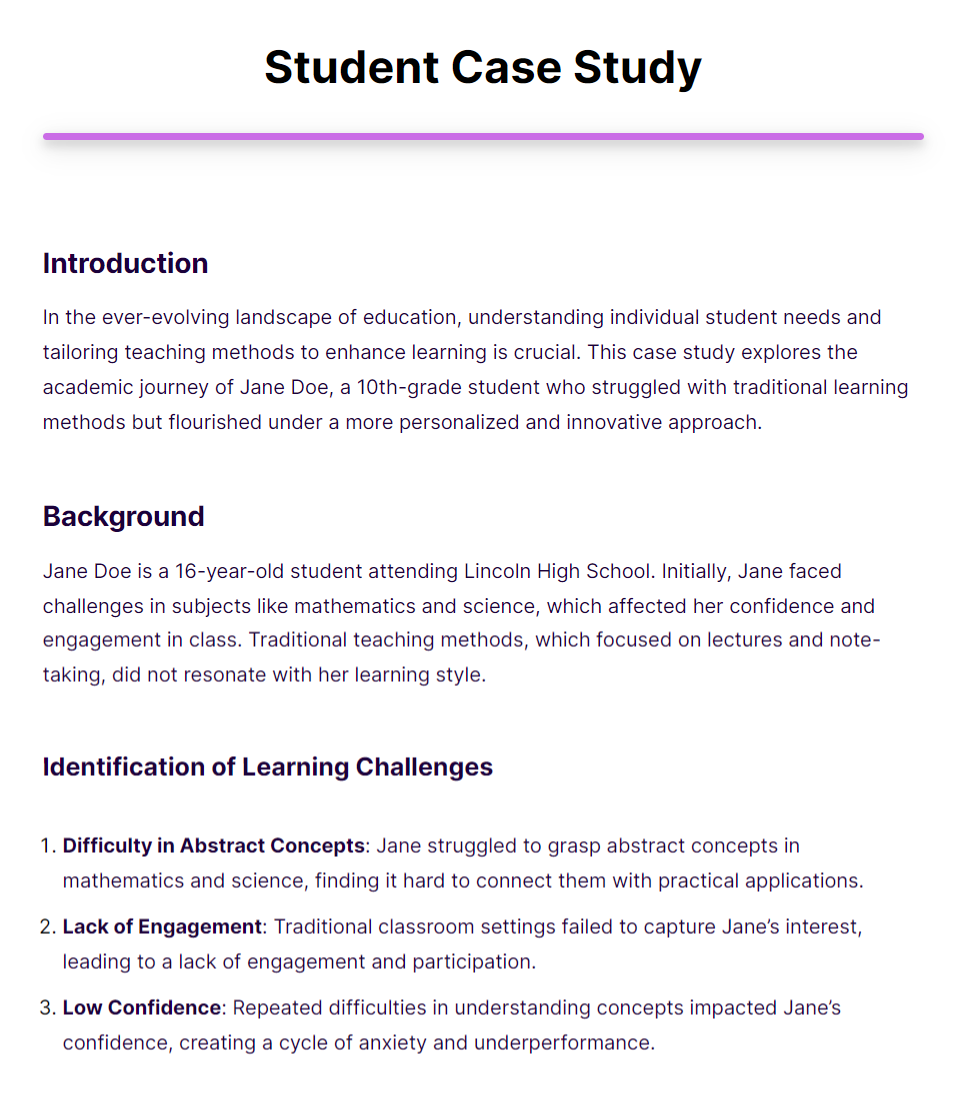
2. College Student Case Study
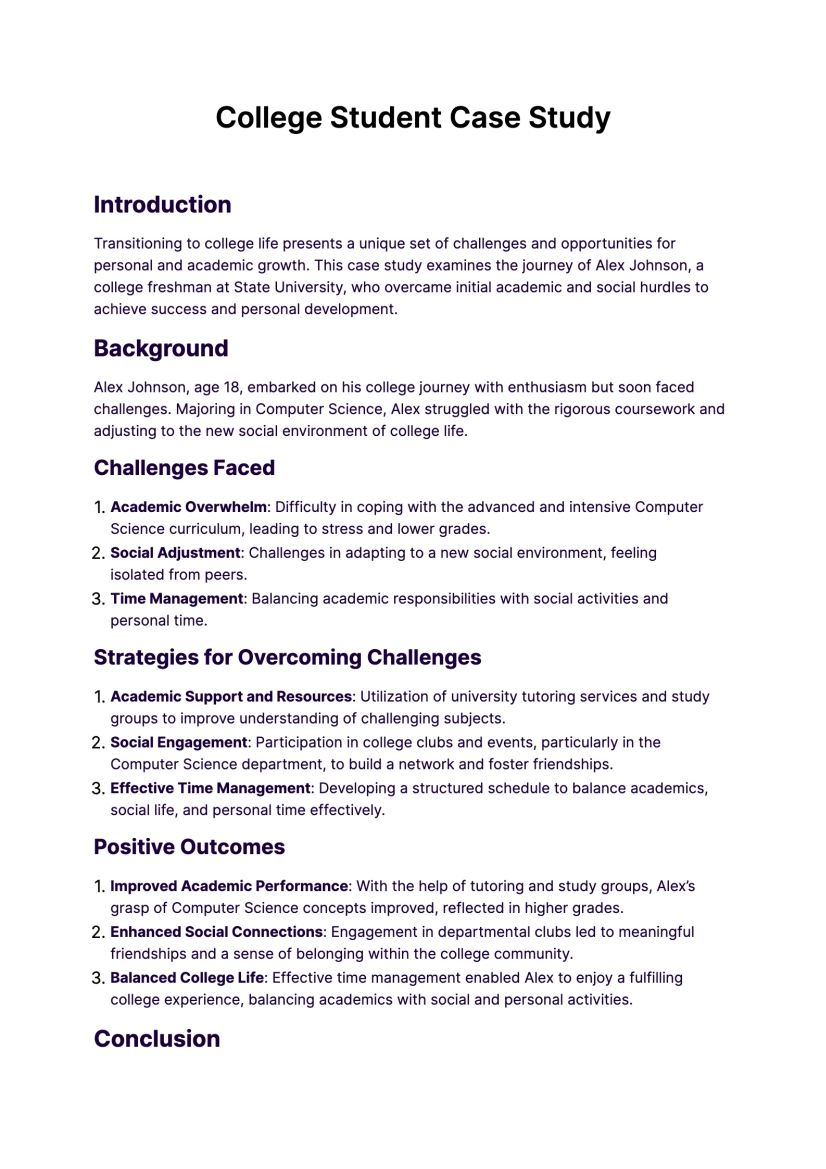
3. Student Case Study in the Classroom
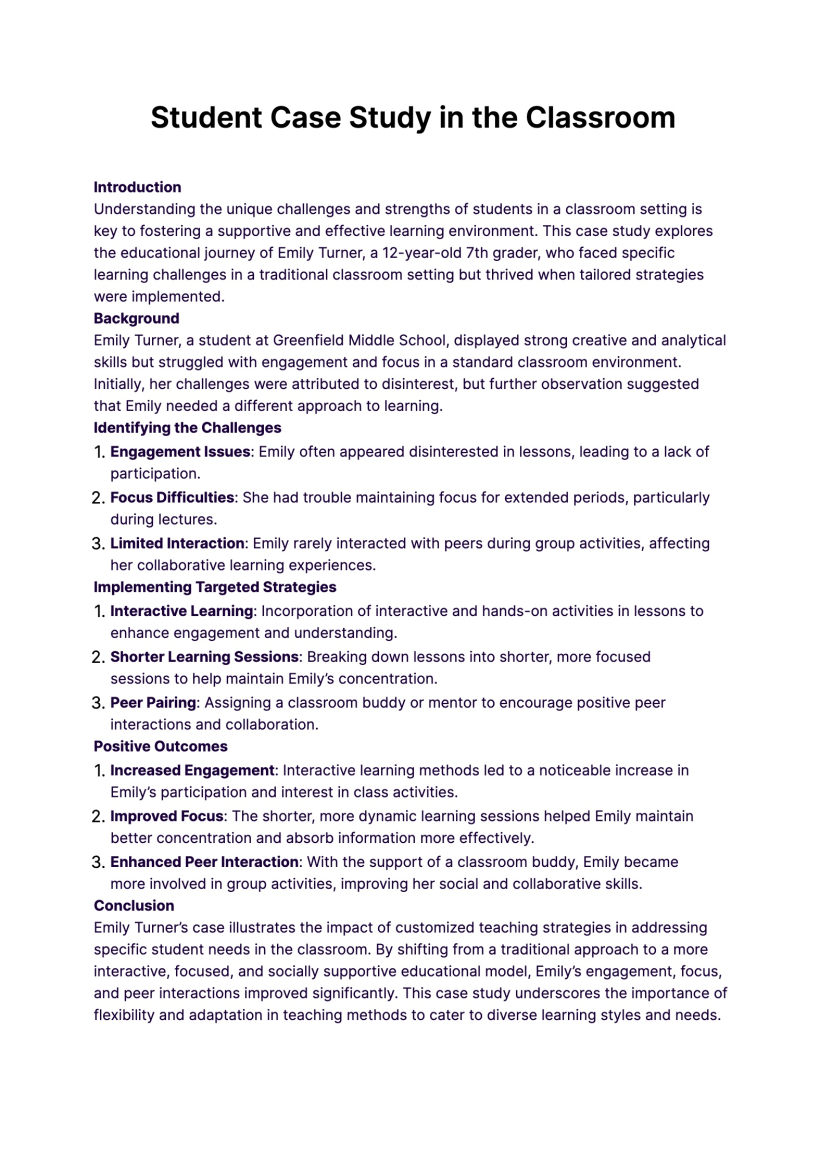
4. Student Case Study Format Template
5. Sample Student Case Study Example
6. Education Case Study Examples for Students
7. Graduate Student Case Study Example
8. Student Profile Case Study Example
9. Short Student Case Study Example
10. High School Student Case Study Example
11. Student Research Case Study Example
12. Classroom Case Study Examples
13. Case Study of a Student
14. Sample Student Assignment Case Study Example
15. College Student Case Study Example
16. Basic Student Case Study Example
17. Free Student Impact Case Study Example
18. Student Case Study in DOC Example
19. Case Study Of a Student with Anxiety
Case Study Definition
A case study is defined as a research methodology that allows you to conduct an intensive study about a particular person, group of people, community, or some unit in which the researcher could provide an in-depth data in relation to the variables. Case studies can examine a phenomena in the natural setting. This increases your ability to understand why the subjects act such. You may be able to describe how this method allows every researcher to take a specific topic to narrow it down making it into a manageable research question. The researcher gain an in-depth understanding about the subject matter through collecting qualitative research and quantitative research datasets about the phenomenon.
Benefits and Limitations of Case Studies
If a researcher is interested to study about a phenomenon, he or she will be assigned to a single-case study that will allow him or her to gain an understanding about the phenomenon. Multiple-case study would allow a researcher to understand the case as a group through comparing them based on the embedded similarities and differences. However, the volume of data in case studies will be difficult to organize and the process of analysis and strategies needs to be carefully decided upon. Reporting of findings could also be challenging at times especially when you are ought to follow for word limits.
Example of Case Study
Nurses’ Pediatric Pain Management Practices
One of the authors of this paper (AT) has used a case study approach to explore nurses’ pediatric pain management practices. This involved collecting several datasets:
-
Observational data to gain a picture about actual pain management practices.
-
Questionnaire data about nurses’ knowledge about pediatric pain management practices and how well they felt they managed pain in children.
-
Questionnaire data about how critical nurses perceived pain management tasks to be.
These datasets were analyzed separately and then compared and demonstrated that nurses’ level of theoretical did not impact on the quality of their pain management practices. Nor did individual nurse’s perceptions of how critical a task was effect the likelihood of them carrying out this task in practice. There was also a difference in self-reported and observed practices; actual (observed) practices did not confirm to best practice guidelines, whereas self-reported practices tended to.
How do you Write a Case Study for Students?
1. Choose an Interesting and Relevant Topic:
Select a topic that is relevant to your course and interesting to your audience. It should be specific and focused, allowing for in-depth analysis.
2. Conduct Thorough Research:
Gather information from reputable sources such as books, scholarly articles, interviews, and reliable websites. Ensure you have a good understanding of the topic before proceeding.
3. Identify the Problem or Research Question:
Clearly define the problem or research question your case study aims to address. Be specific about the issues you want to explore and analyze.
4. Introduce the Case:
Provide background information about the subject, including relevant historical, social, or organizational context. Explain why the case is important and what makes it unique.
5. Describe the Methods Used:
Explain the methods you used to collect data. This could include interviews, surveys, observations, or analysis of existing documents. Justify your choice of methods.
6. Present the Findings:
Present the data and findings in a clear and organized manner. Use charts, graphs, and tables if applicable. Include direct quotes from interviews or other sources to support your points.
7. Analytical Interpretation:
Analyze the data and discuss the patterns, trends, or relationships you observed. Relate your findings back to the research question. Use relevant theories or concepts to support your analysis.
8. Discuss Limitations:
Acknowledge any limitations in your study, such as constraints in data collection or research methods. Addressing limitations shows a critical awareness of your study’s scope.
9. Propose Solutions or Recommendations:
If your case study revolves around a problem, propose practical solutions or recommendations based on your analysis. Support your suggestions with evidence from your findings.
10. Write a Conclusion:
Summarize the key points of your case study. Restate the importance of the topic and your findings. Discuss the implications of your study for the broader field.
What are the objectives of a Student Case Study?
1. Learning and Understanding:
- To deepen students’ understanding of a particular concept, theory, or topic within their field of study.
- To provide real-world context and practical applications for theoretical knowledge.
2. Problem-Solving Skills:
- To enhance students’ critical thinking and problem-solving abilities by analyzing complex issues or scenarios.
- To encourage students to apply their knowledge to real-life situations and develop solutions.
3. Research and Analysis:
- To develop research skills, including data collection, data analysis, and the ability to draw meaningful conclusions from information.
- To improve analytical skills in interpreting data and making evidence-based decisions.
4. Communication Skills:
- To improve written and oral communication skills by requiring students to present their findings in a clear, organized, and coherent manner.
- To enhance the ability to communicate complex ideas effectively to both academic and non-academic audiences.
5. Ethical Considerations:
To promote awareness of ethical issues related to research and decision-making, such as participant rights, privacy, and responsible conduct.
6. Interdisciplinary Learning:
To encourage cross-disciplinary or interdisciplinary thinking, allowing students to apply knowledge from multiple areas to address a problem or issue.
7. Professional Development:
- To prepare students for future careers by exposing them to real-world situations and challenges they may encounter in their chosen profession.
- To develop professional skills, such as teamwork, time management, and project management.
8. Reflection and Self-Assessment:
- To prompt students to reflect on their learning and evaluate their strengths and weaknesses in research and analysis.
- To foster self-assessment and a commitment to ongoing improvement.
9. Promoting Innovation:
- To inspire creativity and innovation in finding solutions to complex problems or challenges.
- To encourage students to think outside the box and explore new approaches.
10. Building a Portfolio:
To provide students with tangible evidence of their academic and problem-solving abilities that can be included in their academic or professional portfolios.
FAQs
What are the Elements of a Case Study?
A case study typically includes an introduction, background information, presentation of the main issue or problem, analysis, solutions or interventions, and a conclusion. It often incorporates supporting data and references.
How Long is a Case Study?
The length of a case study can vary, but it generally ranges from 500 to 1500 words. This length allows for a detailed examination of the subject while maintaining conciseness and focus.
How Big Should a Case Study Be?
The size of a case study should be sufficient to comprehensively cover the topic, typically around 2 to 5 pages. This size allows for depth in analysis while remaining concise and readable.
What Makes a Good Case Study?
A good case study is clear, concise, and well-structured, focusing on a relevant and interesting issue. It should offer insightful analysis, practical solutions, and demonstrate real-world applications or implications.
Case studies bring people into the real world to allow themselves engage in different fields such as in business examples, politics, health related aspect where each individuals could find an avenue to make difficult decisions. It serves to provide framework for analysis and evaluation of the different societal issues. This is one of the best way to focus on what really matters, to discuss about issues and to know what can we do about it.


